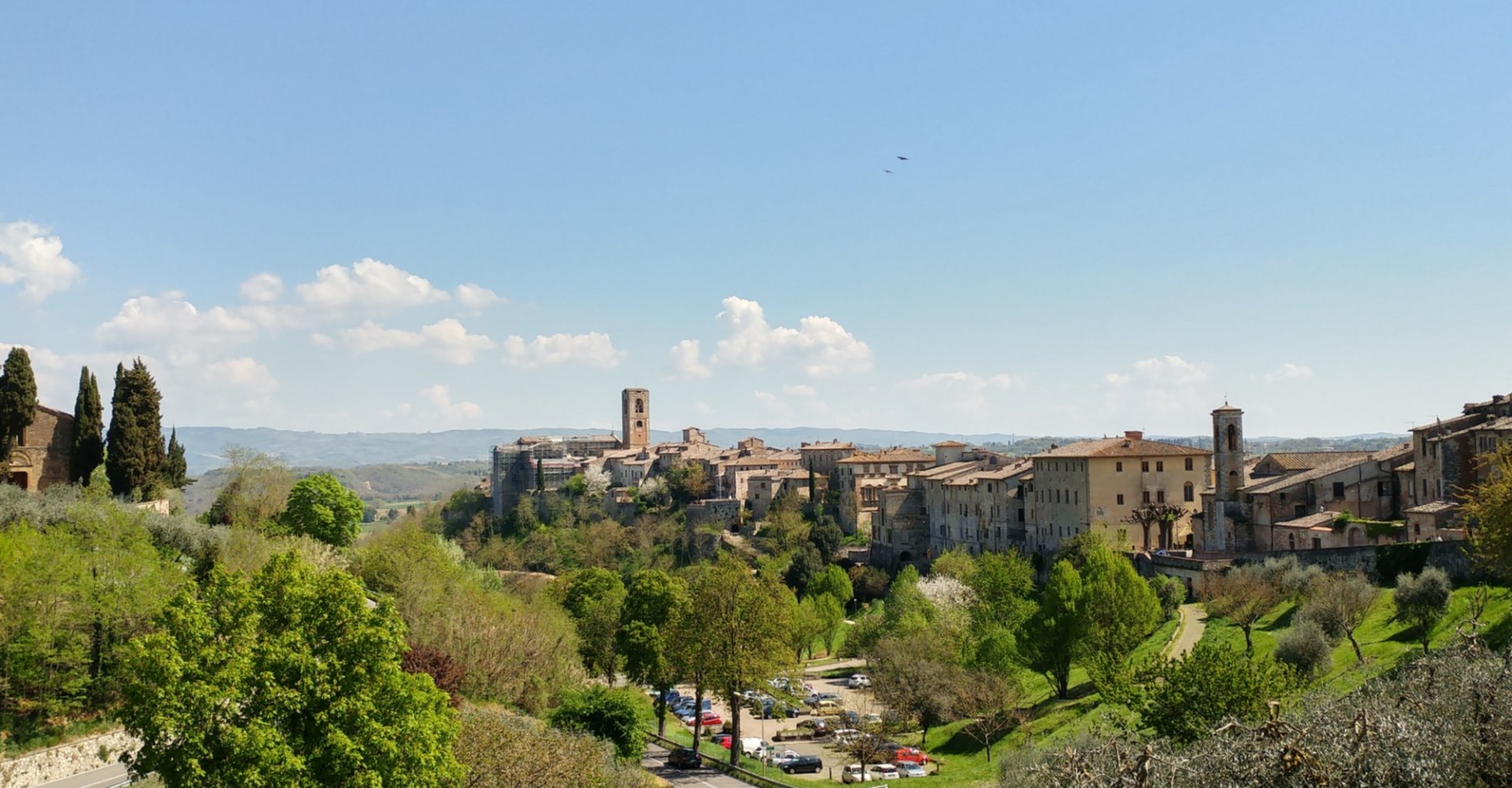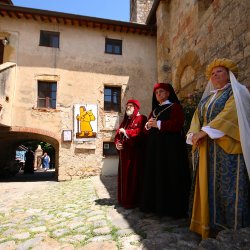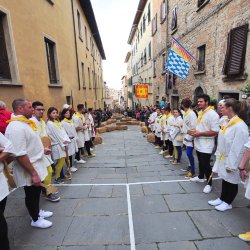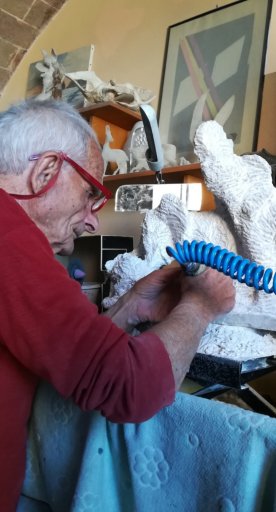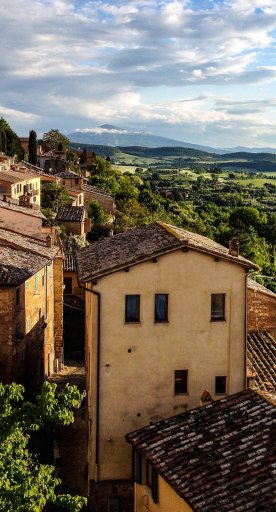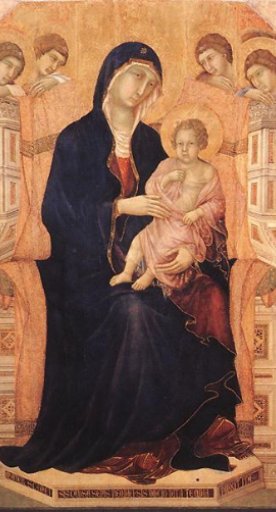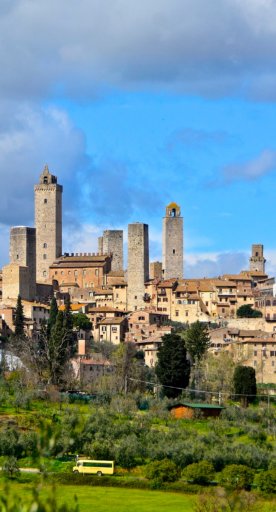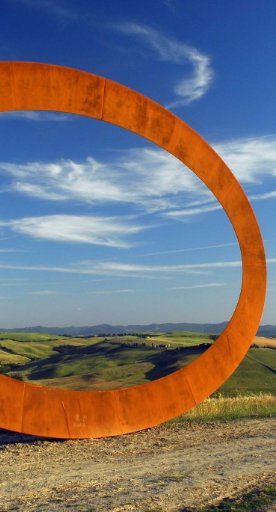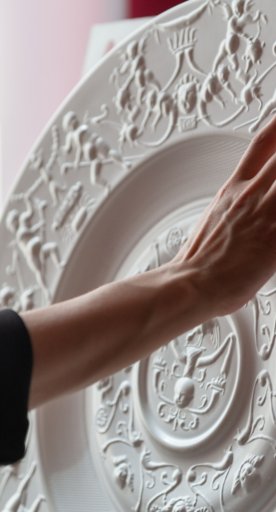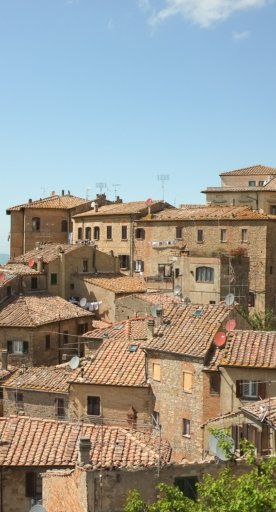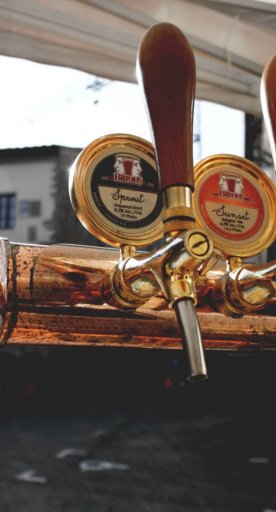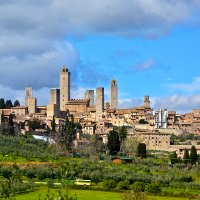Historic buildings in Colle Val d’Elsa
Amid medieval towers, Renaissance palaces and timeless views, iconic monuments between Colle Alta and the lower-lying town
Colle Val d’Elsa is a town that weaves history, art and architecture into an evocative balance between the Middle Ages and the Renaissance. The upper area, known as Colle Alta, embraces towers, noble palaces, churches and ramparts that tell of centuries of civil and religious life, while the lower part bears witness to industrial and modern development. Meandering between the alleys and piazzas, each building reveals a fragment of the town’s memory, including elegant Renaissance façades, ancient tower-houses, historic theaters and places of worship that testify to the cultural and spiritual richness of Colle Val d’Elsa.
-
1.Palazzo Campana
-
2.Co-Cathedral of San Marziale (Duomo)
-
3.Conservatorio di San Pietro
-
4.Church of Santa Maria in Canonica
-
5.Convent of San Francesco
-
6.Palazzo Renieri di Sotto (City Hall)
-
7.Arnolfo Tower-House
-
8.Palazzo Pretorio
-
9.San Lorenzo Hospital
-
10.The Baluardo
-
11.Teatro dei Varii
-
12.Colle Val d’Elsa station
-
13.Cistern of Via della Porta Vecchia
Palazzo Campana
An elegant building constructed in 1536 to a design by Giuliano di Baccio d’Agnolo in Mannerist style and partially unfinished. Overlooking the bridge of the same name, it features a 2-story façade with a Renaissance arch, kneeling windows, a central balcony and original ornamental details in sandstone and plaster. The arch of the palazzo leads to Via del Castello, surrounded by noble buildings that testify to the city’s civic power.
Co-Cathedral of San Marziale (Duomo)

The Santi Marziale, Faustino e Giovita Co-Cathedral in Colle di Val d’Elsa stands were once was the ancient Church of San Salvatore, documented since the 12ᵗʰ century. Elevated to cathedral status in 1592, it has been Co-Cathedral of the archdiocese of Siena-Colle di Val d’Elsa-Montalcino since 1986.
The present building, built between 1603 and 1658, has a neoclassical façade, a Latin cross plan with 3 naves and side chapels, as well as an imposing bell tower. It preserves important works of art, the Holy Nail of the Crucifixion, and 2 historic organs.
Conservatorio di San Pietro
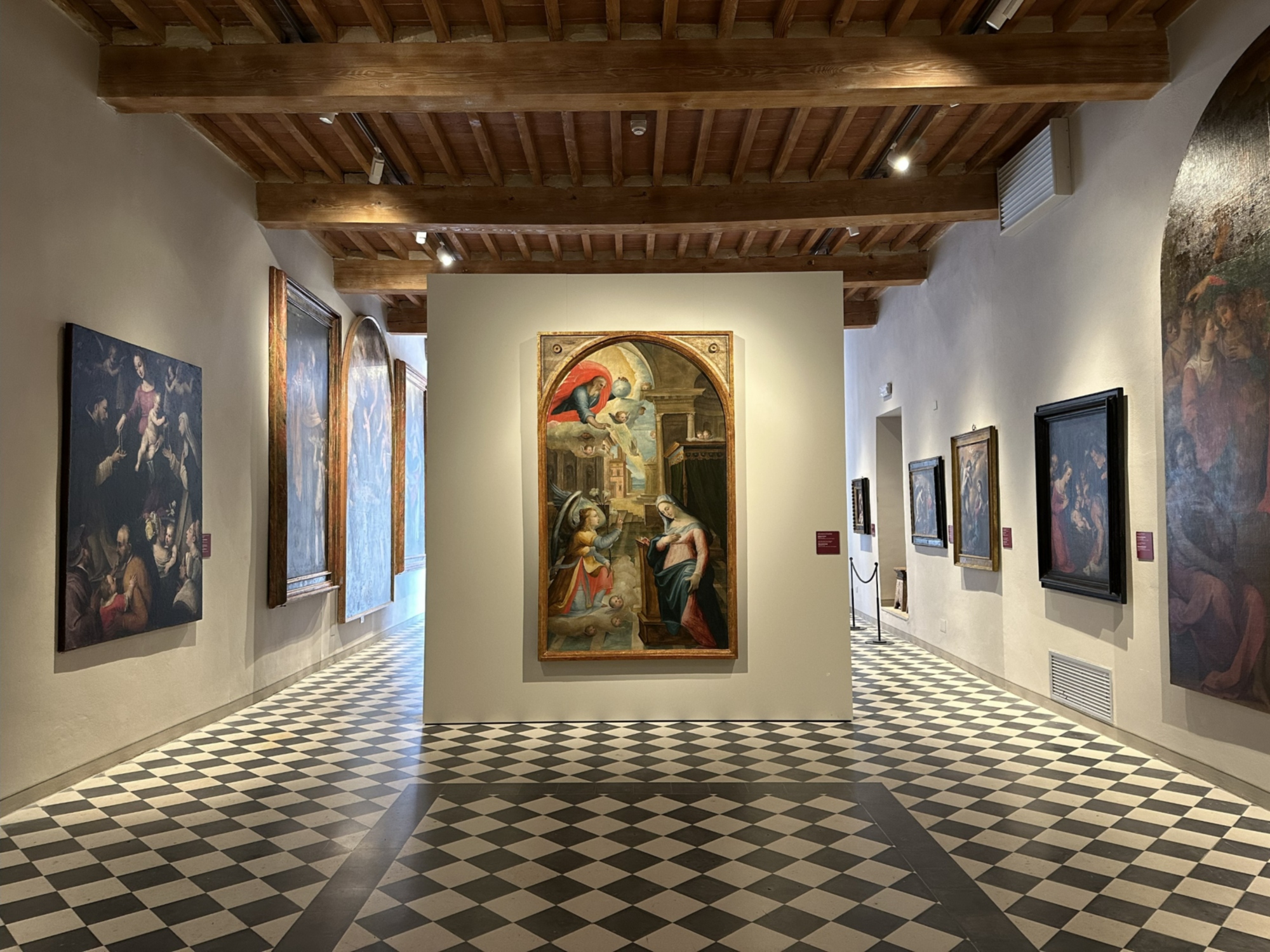
A monastery built in the early 17ᵗʰ century at the behest of Bishop Pietro Usimbardi, designed by Giorgio Vasari the Younger. Equipped with 2 cloisters and rooms split across 2 floors, it was transformed after 1785 into a women’s conservatory and later into a school. The sober and harmonious façade reflects the elegance of Tuscan architecture of the period. Today, it houses the national headquarters of Intercultura and the Colle Val d’Elsa Museum of Civic and Sacred Art.
Church of Santa Maria in Canonica
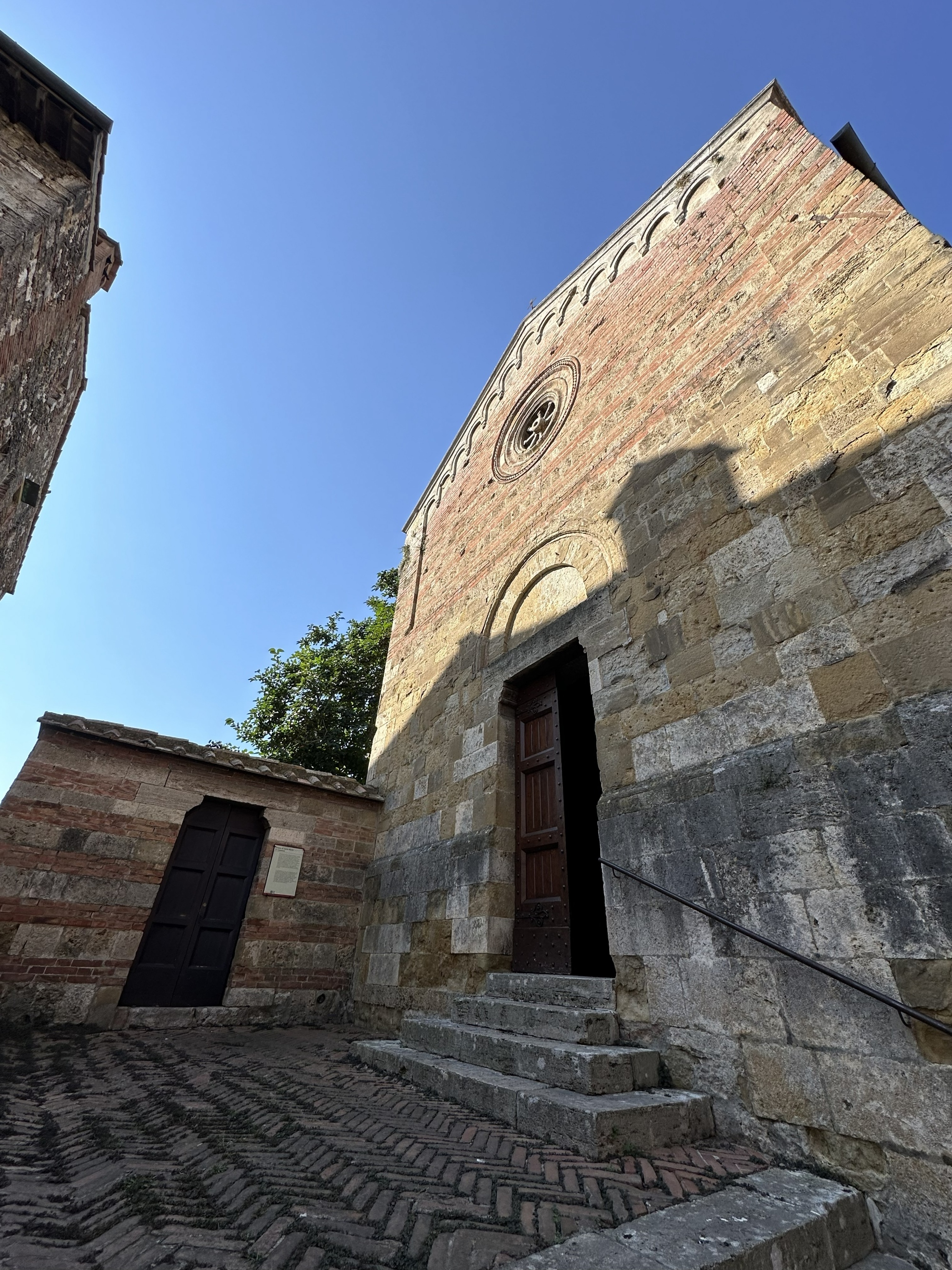
Documented as early as 1183, it retains construction phases dating back to the 12ᵗʰ–13ᵗʰ centuries. Connected to Abbazia di Spugna, it was the seat of municipal assemblies and benefited from donations that expanded its chapels and structures in the 14ᵗʰ–15ᵗʰ centuries. Restored in 1603 by Bishop Usimbardo Usimbardi and later in the 20ᵗʰ century, the building has a single hall with a wooden truss roof. The 2-tone façade has an architraved portal and rose window, while the bell tower dates back to the 13ᵗʰ century. Inside is a 15ᵗʰ-century altarpiece by Pier Francesco Fiorentino depicting the Madonna and Child with Saints.
Convent of San Francesco
Built in the 13ᵗʰ century, the Convent of San Francesco is among the earliest Franciscan settlements in Tuscany. Founded in 1229 by Blessed Pietro Gargalini from Colle, it was built according to the order’s principles of simplicity and poverty, in an isolated place dedicated to prayer. It was not until 1338 that it was connected to the village by the 9-arch San Francesco Bridge. Facing west, it still retains the understated Gothic elegance of its pointed-arch openings.
Palazzo Renieri di Sotto (City Hall)
Originally a Renaissance noble residence, it later became the seat of the Colle Val d’Elsa Town Hall. The interior rooms preserve decorative traces and historical evidence that tell of the continuity between the building’s residential and administrative functions.
Arnolfo Tower-House
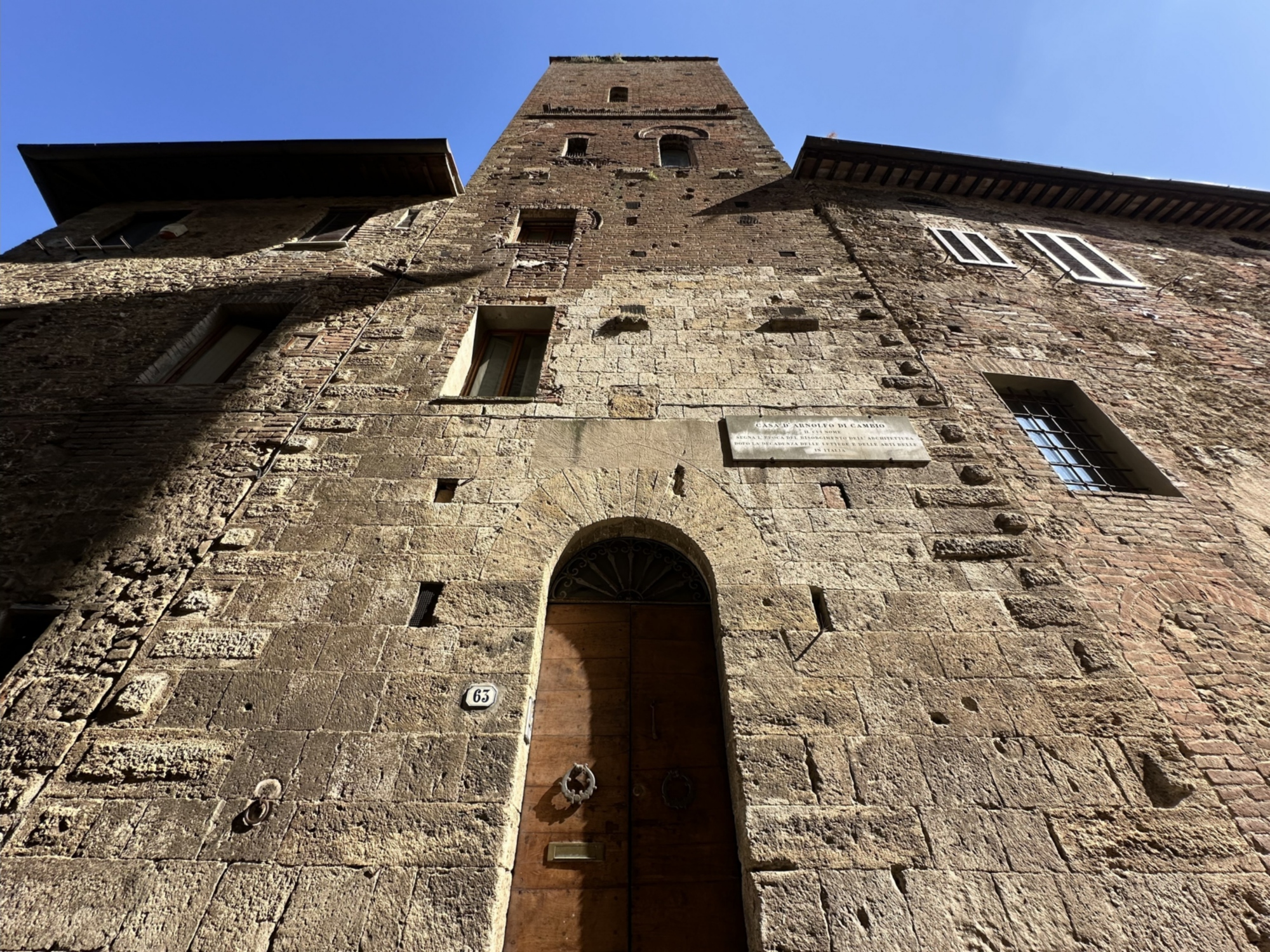
Among the oldest buildings in the city, this medieval tower is traditionally referred to as the birthplace of Arnolfo di Cambio, the celebrated architect and sculptor of Florence Cathedral. With its vertical structure and local stone facing, the building testifies to the defensive urbanism typical of the Middle Ages. Today, it houses a small museum space dedicated to the history of Arnolfo and the medieval Colle.
Palazzo Pretorio
This historic medieval public building is known for its façade adorned with numerous coats of arms and inscriptions commemorating the podestas and priors who exercised justice there. A symbol of civic power and municipal administrative life, it is one of the most representative buildings of the period when Colle was a free municipality. Its interior rooms, now restored, sometimes host exhibitions and cultural initiatives.
San Lorenzo Hospital
Founded in 1635 by the Usimbardi family, the San Lorenzo Hospital served the community of Colle di Val d’Elsa until the end of the 20ᵗʰ century. Subjected to various renovations and expansions, it was closed with the opening of the new Campostaggia Hospital. It has been a hotel facility since 2010.
The Baluardo
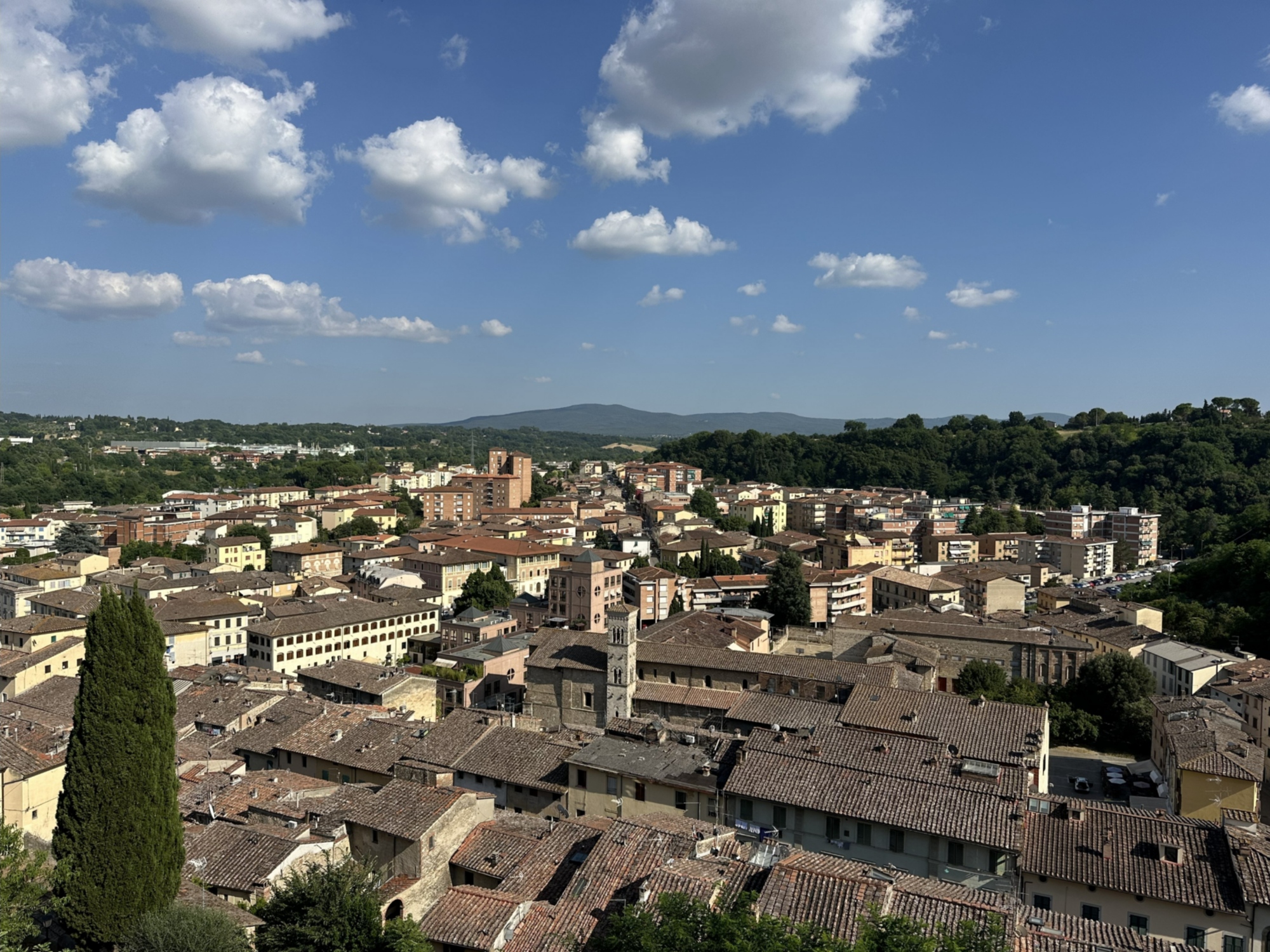
A historic defensive bastion located at the far end of the Castle; it offers magnificent views of the lower town and the Chianti landscape. Behind it is Palazzo Masson, built in the late 19ᵗʰ century on the site of the ancient Porta al Canto. Branching off from the Baluardo are Costa and Via del Muro Lungo, streets that connect the upper and lower parts of the city. A modern lift system designed with advice from architect Jean Nouvel was opened in 2006 and is now closed for maintenance.
Teatro dei Varii

First a hospice and refuge of Saints Faustino and Giovita, then a hospital and the seat of the Accademia dei Varii, it was repurposed as a theater in 1762 to a design by Antonio Luigi Galli Bibiena, accommodating the Colle nobility in its 3 tiers of boxes.
Over time, it has undergone restorations, including that of 1826 and another between 1985 and 1991, ensuring its preservation and adaptation to safety standards. With a capacity of about 200, it is now used for experimental theater performances, concerts and art exhibitions.
Colle Val d’Elsa station

Opened in 1885 as the terminal of the Poggibonsi-Colle Val d’Elsa railway, the station in Piazza Arnolfo di Cambio was closed in 1991. After years of neglect, starting in 2010 the building was restored to now house a pharmacy on the ground floor and a law and business office on the upper floors, with some railroad-era memorabilia. The track yard was transformed into an underground parking lot, while the old railroad track became a road and urban bike path.
Cistern of Via della Porta Vecchia
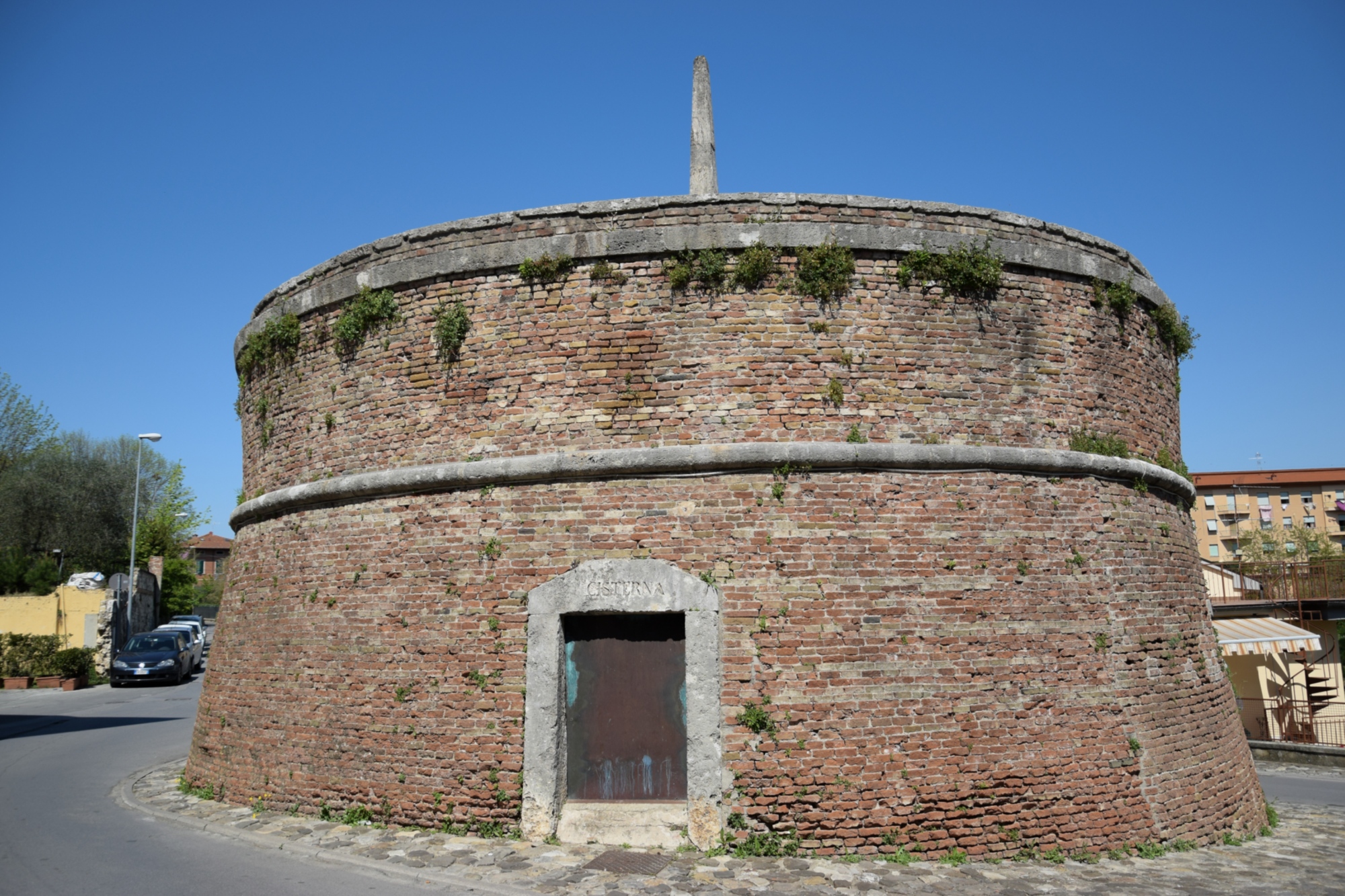
Located at the entrance to Colle Alta, the ancient cistern is an austere-looking circular building once intended to hold the city’s water. Its monumental presence is reminiscent of a small fort, a symbol of protection and valor. In 2002, artist Marisa Merz chose this location for a site-specific intervention dedicated to the theme of threshold and discovery, with a copper work that restores the place’s symbolic and poetic power.
